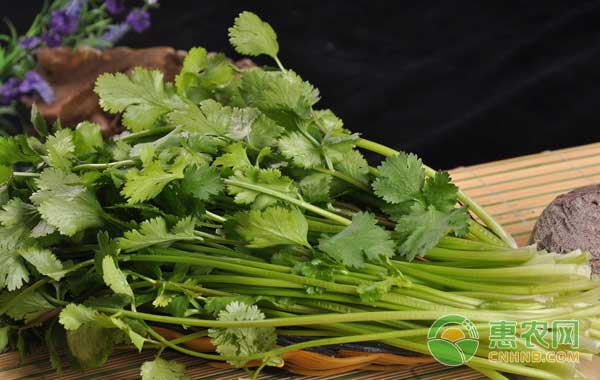Coriander was introduced from the Western Region during the Western Han Dynasty. The scent of coriander is very special, so it is often used to embellish dishes, or for body odor, fresh food is also possible. The pollution-free management technology of coriander has strict regulations on the application of fertilizers and pesticides.
1. It is forbidden to use contaminated fertilizers and vigorously promote the formulation of scientific fertilization.
(l) Pollution-free vegetables are prohibited from using toxic wastes and sewage in cities, hospitals and industrial areas as fertilizers; it is forbidden to use nitrate-nitrogen fertilizers (such as ammonium nitrate) and compound fertilizers produced with nitrate nitrogen as raw materials for topdressing; mature harvesting It is forbidden to use unfertilized human excrement.
(2) Adding fertilized farmyard manure (1.5-2 tons/mu) to fertilize the soil; adding potassium fertilizer (potassium sulfate 20-30 kg/mu) and micro-fertilizer (zinc, boron, copper, platinum, etc.) formula for scientific fertilization Apply fertilizers for pollution-free vegetables; properly regulate the use of nitrogen fertilizers; increase fertilizer utilization, promote vegetable growth and strength, and achieve high quality, high yield and income.

2. It is strictly forbidden to use highly toxic, highly toxic and high-residue pesticides on pollution-free vegetables, and vigorously promote the use of biological pesticides and high-efficiency, low-toxicity and low-residue pesticides.
(l) Pesticides banned on pollution-free vegetables. Currently common in the market are dicofol, isocarbophos, methamidophos, synergistic methamidophos (methyl 1605), diatoms (gale), omethoate , speed culling, 1605, hyperosmotic dimethoate, methionine, lysine, zinc phosphide, blown dan (Cai Buwei), methomyl (Wanling), aldicarb (iron-kill), Organic phosphorus and organochlorine pesticides such as chlorpyrifos, aluminum phosphide, insecticide, speed gram, and herbicidal acid.
(2) Vigorously promote the use of Bt insecticides, printed pixels, agricultural streptomycin, Sterling and other biological pesticides; cross-use of albatin, harmful extinction, external sea, Plex and other new pyrethroid pesticides.
3. Scientific use of pesticides and strict control of the safety intervals of various pesticides on vegetables.
(1) Symptomatic medication: According to the type of pests and diseases that occur in vegetables, select suitable high-efficiency insecticide or fungicide pesticides, use appropriate amount of medicine, and mix enough water to reduce the number of medications and improve the control effect.
(2) Cross-use of pesticides: First, the use of biological pesticides and other pesticides; second, the use of similar pesticides, to avoid the resistance of bacteria and pests, improve the control effect.
(3) Plant biological regulators must be used correctly and rationally in the production of pollution-free vegetables.
(4) Strictly control the safety interval of various pesticides on vegetables: the safety interval refers to the distance between the last application of pesticides and vegetables for harvesting and listing. Generally, leafy vegetables (cabbage, parsley, etc.) shall not be less than 10 days, fruits and vegetables. Classes (tomato, kidney beans, etc.) must be no less than 5 days, and other vegetables for 7-10 days.

4. Strengthen field management and improve the ecology of vegetable fields.
(l) Timely irrigation: Vegetable fields should be irrigated in time to keep the soil moist, and water should not be accumulated in the ditch to reduce the path of pathogens and disease-induced conditions.
(2) timely cultivating and weeding: cultivating and weeding in vegetable fields can improve ventilation and light transmission, adjust surface temperature, reduce nutrient consumption, reduce pest occurrence, and promote vegetable growth.
(3) The timely removal of dried yellow feet in the middle and late stages of vegetables can eliminate pathogens and eggs, thereby reducing the use of pesticides.
5, timely harvest, safe listing.
Timely harvesting: Harvesting of pollution-free commercial vegetables should take into account the three factors of vegetable maturity, market price and pesticide safety interval to determine the harvesting period.
The above is the whole content of the pollution-free management method of coriander, I hope to help you! Want to know more about agricultural knowledge, focus on the farmer's school!
Skin Care Powder,Honeysuckle Extract,Honey Powder,Eriobotrya Japonica Leaf Extract
Fufeng Sinuote Biotechnology Co.,Ltd. , https://www.ffsinuoteplant.com